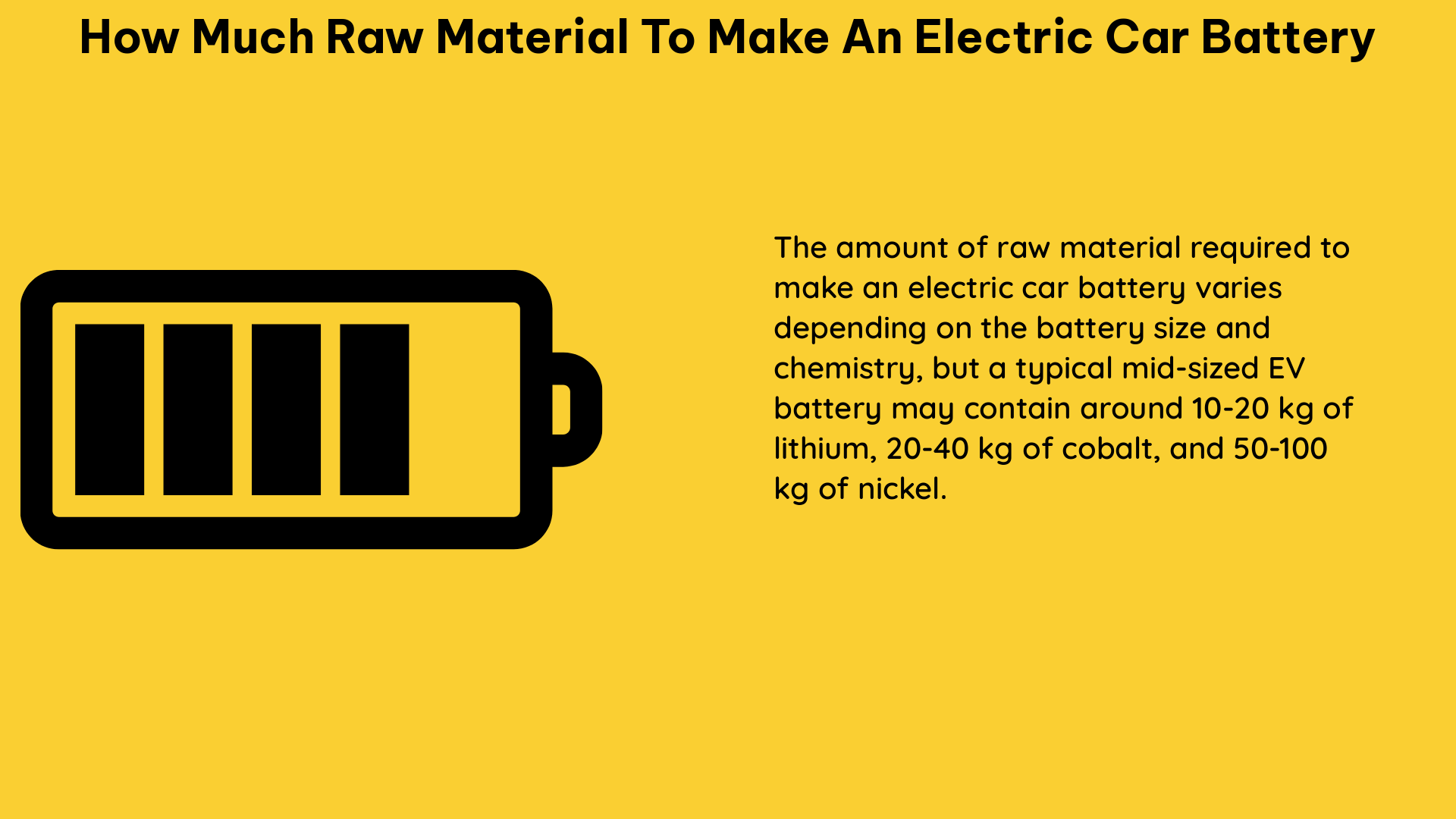The production of an electric car battery requires significant amounts of raw materials, including lithium, cobalt, nickel, graphite, and manganese. To manufacture a single EV battery, you must process 25,000 pounds of brine for the lithium, 30,000 pounds of ore for the cobalt, 5,000 pounds of ore for the nickel, 25,000 pounds of ore for copper, and unspecified amounts for graphite and manganese, equating to digging up 500,000 pounds of the earth’s crust.
Lithium-Ion Batteries: The Backbone of Electric Vehicles
Lithium-ion batteries are the most common type of battery used in electric vehicles (EVs). These batteries are composed of several key raw materials, including:
- Lithium: The demand for lithium for vehicle battery production is expected to be between 250,000 and 450,000 tons by 2030.
- Cobalt: The demand for cobalt for vehicle battery production is expected to be between 250,000 and 420,000 tons by 2030.
- Nickel: The demand for nickel for vehicle battery production is expected to be between 1.3 and 2.4 million tons by 2030.
- Graphite: Graphite is a critical anode material in lithium-ion batteries, but the exact demand is not specified.
- Manganese: Manganese is used in the cathode of lithium-ion batteries, but the specific demand is not quantified.
Breakdown of Raw Materials for a Single EV Battery

According to industry estimates, the raw materials required to manufacture a single EV battery are as follows:
| Raw Material | Amount |
|---|---|
| Lithium | 25,000 pounds of brine |
| Cobalt | 30,000 pounds of ore |
| Nickel | 5,000 pounds of ore |
| Copper | 25,000 pounds of ore |
| Graphite | Unspecified amount of ore |
| Manganese | Unspecified amount of ore |
In total, the production of a single EV battery requires the processing of 500,000 pounds of the earth’s crust. It’s important to note that not all of this material is used solely for the battery, as some is lost during the processing and manufacturing stages.
Growing Demand for Battery Raw Materials
The surge in electric vehicle sales is driving a significant increase in the demand for battery raw materials. In 2021, global EV sales more than doubled to 6.5 million units, with Europe and China accounting for 84% of all electric passenger cars.
By 2030, it is expected that battery EVs and plug-in hybrids will account for 29% of passenger car sales globally. This rapid growth in EV adoption will further increase the demand for lithium, cobalt, nickel, graphite, and manganese, putting pressure on the supply chain and potentially leading to temporary shortages or price increases for individual raw materials.
Factors Affecting Raw Material Supply and Demand
The availability and supply of raw materials for EV batteries can be influenced by several factors, including:
- New Production Sites: The development of new mining and processing facilities for lithium, cobalt, nickel, and other raw materials can impact the overall supply.
- Demand Fluctuations: Changes in global EV sales and the adoption of electric vehicles can affect the demand for battery raw materials.
- Export Issues: Disruptions in the export of raw materials from producing countries can lead to supply chain challenges.
- Technological Advancements: Improvements in battery chemistry and manufacturing processes may reduce the amount of raw materials required per battery.
Conclusion
The production of an electric car battery requires significant amounts of raw materials, including lithium, cobalt, nickel, graphite, and manganese. The specific quantities needed for a single EV battery are substantial, with the processing of 500,000 pounds of the earth’s crust required.
As the global demand for electric vehicles continues to grow, the need for these battery raw materials will also increase, potentially leading to supply chain challenges and price fluctuations. Understanding the raw material requirements and the factors affecting their availability is crucial for the sustainable development of the electric vehicle industry.
References:
- Unlocking the True Value of EV Battery Through Price
- How Much Earth Has to Be Moved to Create One EV Battery?
- Quantifying Battery Raw Material Demand
- Lithium-Ion Battery: Opportunities and Challenges in the Automotive Industry

The lambdageeks.com Core SME Team is a group of experienced subject matter experts from diverse scientific and technical fields including Physics, Chemistry, Technology,Electronics & Electrical Engineering, Automotive, Mechanical Engineering. Our team collaborates to create high-quality, well-researched articles on a wide range of science and technology topics for the lambdageeks.com website.
All Our Senior SME are having more than 7 Years of experience in the respective fields . They are either Working Industry Professionals or assocaited With different Universities. Refer Our Authors Page to get to know About our Core SMEs.